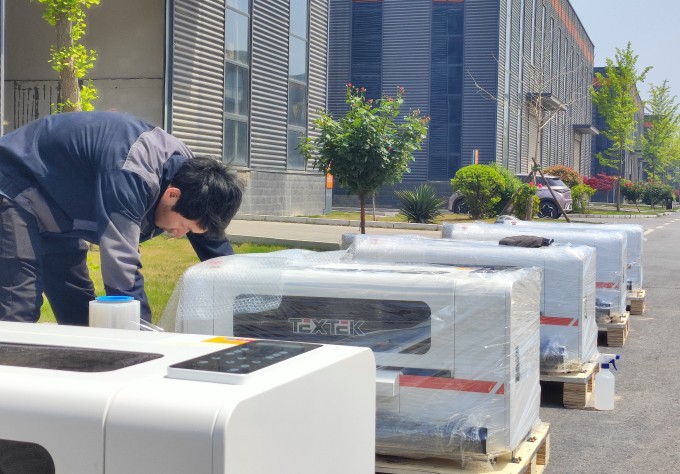The DTF market continues to grow rapidly, but some customers living in dry areas complain that dtf printers are prone to static electricity due to climate problems. So let's discuss the main reasons and solutions for printers to easily generate static electricity.
What is static electricity?
Substrate static electricity, commonly referred to as ESD or electrostatic discharge, is the sudden and momentary flow of electrical current between two charged objects. Static electricity typically causes ESD through a process called tribocharging.
When substrates come into contact with other substrates or printing equipment and then separate, the potential movement in the air between them can generate ESD.
Source of static electricity
Printing is the perfect storm for static electricity.
ESD is caused by lack of proper humidity control and drying conditions. In a typical printing plant, substrates ranging from plastic to wool are stacked and dragged against each other, exchanging electrons and creating static charges. These moving materials also generate heat and radiation.
In some cases, static electricity can regenerate on the substrate as it passes through the printer.

Some problems caused by static electricity:
If the humidity in your working environment is below 40%, the friction between the film, clothing and the printer will generate static electricity. Static electricity can affect your work in many different ways, such as:
As the PET film passes through the printer, these two objects generate static electricity, causing the films to stick together and causing the printer PET film is stuck.
Static electricity can cause ink droplets to stick to the printhead, eventually clogging the nozzles and causing printhead damage.
Dust and lint that accumulate on the substrate, printer, or film can be attracted to static electricity, causing imperfections in the print.
Static electricity can attract ink to the wrong place or fail to adhere to the correct place. Or it can repel ink away from where it's needed. White DTF inks are more susceptible due to their composite composition. Then it will affect the normal work of the printer.
Let's see what solutions
TEXTEK can provide you:
1. First, make sure that the working environment of the DTF printer is suitable. It is recommended to keep the temperature at 20-30 degrees Celsius and the humidity at 40-70%. Turn on the air conditioner or prepare a humidifier if necessary.
2. Put a static rope on the back of the printer to reduce some static electricity.
3. The TEXTEK printer has reserved a ground wire interface, which can be grounded to discharge static electricity.
4. Paste aluminum foil paper on the front heater of the DTF printer, which can also effectively prevent static electricity.
5. Turn down the control suction knob to reduce friction and reduce electrostatic voltage.
6. Ensure the storage conditions of PET film, over-dry film is also an important cause of static electricity.
In summary, the problem of static electricity generated during the printing process of the printer can basically be solved. If you have other better methods or other questions about using DTF printers, we can also discuss together,
TEXTEK is always at your service.
TEXTEK's business covers many countries around the world, including emerging markets and mature markets. We have a complete sales system and are committed to using our professional knowledge and first-class service to help customers improve their digital printing business.
.jpg)

.jpg)
